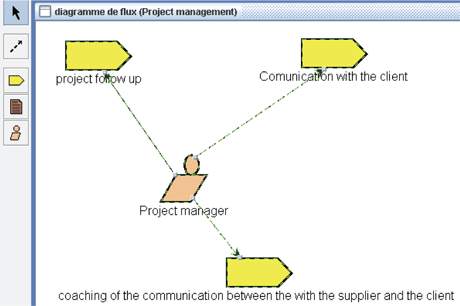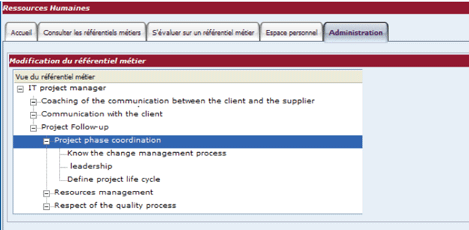by Sandrine Reiter, Brice Bucciarelli and Luc Vandenabeele
Several surveys conducted in Luxembourg by the CRP Henri Tudor have found that poor or limited use of e-learning occurs in business and commerce when training is inadequate for the needs of small and medium enterprises (SMEs). Nowadays, companies ask for tools that give their employees the opportunity to develop their competencies in relation to their specific business. To satisfy such requests, training tools should be designed to reflect the core business processes of the relevant firm, and should be adapted to cope with different skill levels. CRP Henri Tudor is currently developing AnaXagora, an open-source platform consisting of four modules that can be used to design business processes, manage knowledge and competencies and follow e-learning courses.
During 2002, in the framework of a Leonardo project (ITEMA), the CRP Henri Tudor developed an e-learning management system (LMS) based on the open-source LMS, Ganesha 1.2. Several modifications were made and new functionalities were added, such as a course navigation menu, personalized learning path based on the learners needs, user rights management and compliance with the Sharable Content Object Reference Model (SCORM).
However, e-learning surveys conducted in Luxembourg companies showed poor uptake of e-learning, reflecting an inadequacy in existing software solutions for the requirements of SMEs, and particularly the lack of specific solutions.
E-learning implies an active involvement of learners in their own training, and should therefore be more oriented towards business processes and closer to employees' activities. As the European commission put forward, 'the professionals - suppliers of e-learning - should offer innovating solutions to meet SMEs' specific needs'.
Based on all these observations, the CRP Henri Tudor is developing AnaXagora, an innovative platform that integrates four different modules (BPM-Business Process Management-, HR-Human Resources-, LMS-Learning Management System- and KM-Knowledge Management-). The goal of this platform is to allow firms to describe and manage their core business competencies in one unique tool. However, each open-source module of AnaXagora also functions as a complete standalone application, and was developed separately by reusing and enriching existing open-source components


The BPM module allows business processes to be represented graphically in terms of a list of activities that may or may not be in sequence. This module is based on the SPEM (Software Process Engineering Metamodel) framework but is also compatible with definitions given by the norm ISO 15504. A process is graphically represented within an activity diagram, which shows the logical sequence of activities. Each activity is then assigned a role; this responsibility of a role towards an activity is represented on the flow chart diagram. For example, Figures 2 and 3 show the description of a small part of the process of 'project management in a computer science SME.

Here, the project manager is responsible for the activity 'project follow-up', and hence requires the appropriate competencies to correctly perform the work.
The HR module is dedicated to the definition of these competencies via the 'jobs description'. Each activity defined in BPM for a given role, is described by the list of tasks that the role should achieve. For each task, the list of competencies is then divided into three different types: 'knowledge', 'know-how' and 'savoir-être'
Returning to the 'project management' example, in realizing the activity 'project follow-up', different tasks like project phases 'manager should have leadership (savoir-être), should define the project lifecycle (know-how) and should be aware of methodology that supports this lifecycle definition (knowledge). Figure 4 shows a part of the frame of reference for the 'project manager' in the Anaxagora HR module.

However, representing job descriptions is not enough. Companies are more concerned with the evaluation of their employees' competencies than with simply defining them. As a consequence, the HR module also includes an assessment solution.
A questionnaire is associated with each job description, and can be performed as a self-assessment. This can be done either on the entire frame of reference or on part of it (activity level or task level).
Through the HR module, companies can identify competencies that must be developed and then define new and specific e-learning courses in the LMS module. The LMS allows learners to follow online courses, teachers to support and help learners in their progression through a course, and authors to manage the course content.
Information coming from the BPM, HR and LMS modules is capitalized in the KM module. This module also allows users to visualize existing frames of reference, job descriptions, and the courses available. Within the KM module, users can also share information that could be useful to others (best practices, for example).
AnaXagora development orientations are driven by experiments conducted in a variety of administrations and institutions (Ministère de l'Economie et du Commerce extérieur de Luxembourg, European Bank of Investment), companies (Institut Européen de Formation en Santé) and universities. Future work will be concentrated on a better integration of the four modules, particularly through a Web portal where users can select the services they need.
Please contact:
Sandrine Reiter, Brice Bucciarelli and Luc Vandenabeele
Public Research Centre Henri Tudor, Luxembourg
E-mail: sandrine.reiter![]() tudor.lu, brice.bucciarelli
tudor.lu, brice.bucciarelli![]() tudor.lu, luc.vandenabeele
tudor.lu, luc.vandenabeele![]() tudor.lu
tudor.lu









